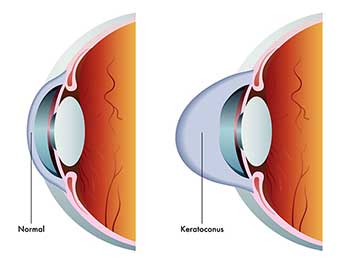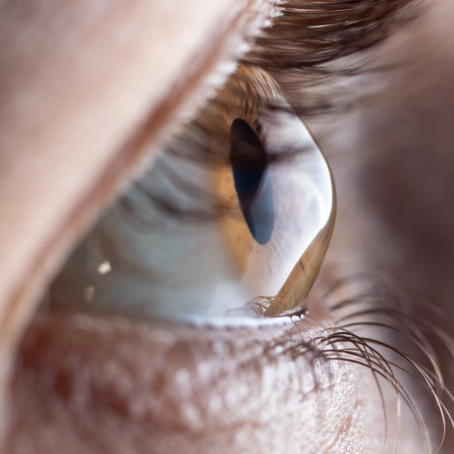Search
Search
Typically presenting in adolescence, keratoconus is a disease of the cornea; that is, the transparent, outermost layer of the front of your eye.
Keratoconus leads to changes in the thickness and shape of your cornea, potentially affecting your vision if left untreated. Keratoconus thins out the cornea and bulges out in a cone shape. The cone-like shape brings light rays out of focus, making daily tasks difficult.

Symptoms of keratoconus include:
You may be at higher risk of developing keratoconus if you have a family history of the disease, eye rubbing hard and often, or you have an underlying medical condition like asthma, Ehlers-Danlos syndrome, retinitis pigmentosa, Down syndrome, or hay fever. Knowing your family’s medical history can improve your awareness, and subsequently, your odds of early detection.
Those at risk of developing keratoconus should see their eye doctor for exams every six to twelve months depending on their provider’s recommendations.

Keratoconus treatment depends on two primary factors: the progression of keratoconus and the severity of the current condition.
Most keratoconus patients will need corrective lenses in the form of glasses, contact lenses, or scleral lenses. These function to correct vision problems, but in some cases won’t be enough to help visual acuity. For those whose condition continues to progress, corneal collagen cross-linking is often recommended. This treatment could help prevent the need for a corneal transplant in the future. Our Grand Junction ophthalmologists are experienced in corneal collagen cross-linking surgery and happy to discuss options with you.
In the most severe cases, corneal transplant is necessary and generally a very successful surgical procedure.
To learn more, schedule your consultation appointment with ICON Eyecare here.